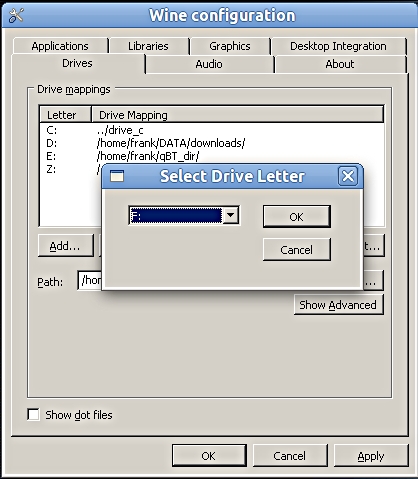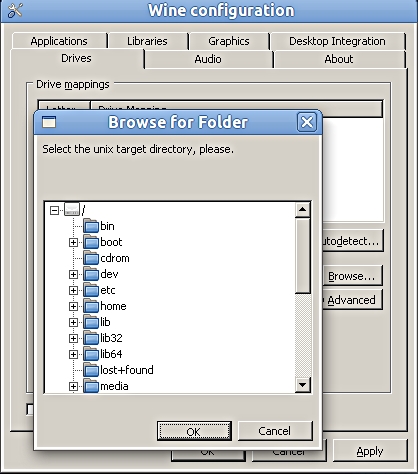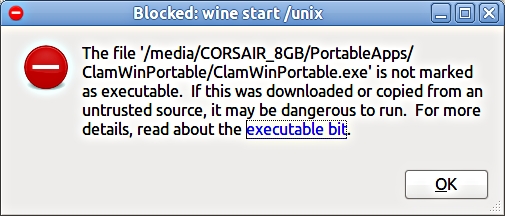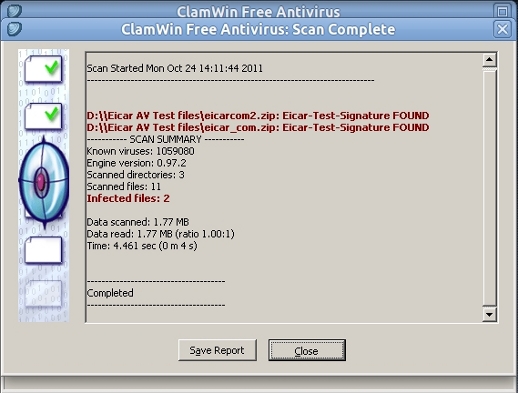What is Wine and why is Wine “Not an Emulator”? I use Wine to run a Windows application that is a better fit for my purposes than what’s available for Linux. I couldn’t really answer that question. So I went to the source: WineHQ to look it up.
Wine is not an Emulator like DOSbox is, for example. DOSbox allows you to run DOS applications like old games in a Emulated Environment. What the game or program “sees” is a standard DOS PC with Emulated old hardware with the old graphics cards (Tandy, Hercules, VESA) and antique sound cards like the original SoundBlaster or Gravis Ultra Sound. There are versions of DOSbox for post-DOS Windows (NT and later) and Linux because those old DOS games can’t run on either.
With Wine what the program “sees” is a Modern Windows PC, without a single bit of actual Microsoft code involved. The program sees standard Windows APIs for video, sound and networking. The program “sees” a Windows file system even though the actual file system is far different.
Because the code of the Windows program natively runs in a Windows API and on your computer’s processor, the program will run very nearly as fast on Wine as if it were running in Windows.
Wine is part of the Linux Desktop Manager. You can cut and paste from Wine Windows to Linux Windows – and back. Programs running in Wine can interact with the Linux environment.
Wine being described as the “Not an Emulator” Emulator…Does that sort of make sense now?
What use is Wine? Better question for most because Linux now has plenty of good software. Why would Wine actually be worth the trouble to install and configure it?
If there is some Windows software that you absolutely must have there is a really good chance it will run in Linux using Wine. Part of the WineHQ is a Database of Applications that run in Wine and are rated “Platinum”, “Gold” and “Silver” (the Wine Application Database). A link at the bottom of that page points to the Wine-Reviews Blog where you will find much more information about configuring Wine and fixing problems.
Here is one application that’s a must-have for me
Back in the days before I figured out how to use Wine I needed to re-boot into Windows in order to use the Windows Anti-Virus application to detect evil in my downloads. It was inconvenient to reboot and had the bonus problem of only scanning for Windows MalWare. It wasn’t looking for Linux MalWare so I could have become infected even after all my precautions.
Wine plus the ClamWin Portable Anti-Virus is the answer to both the re-booting hassle and the lack of scanning for Linux MalWare. ClamWin Portable uses the virus definitions from the ClamAV Linux Anti-virus, which is used on servers to scan email for Windows, Macintosh, Linux and even Unix viruses.
To use ClamWin Portable with Linux first you have to install Wine. Ubuntu has Wine in the Ubuntu Software Center. After Installing, then Wine needs to be configured. With Ubuntu the Wine “Not an Emulator” comes up mostly ready to go.
There is a graphical configuration panel that makes Wine easy to configure. You need only to do one thing for ClamWin Portable to work: map a Windows Drive letter to the target files you want to scan.

Step 1

Step 2
Copy the ClamWin Portable folder (inside the PortableApps Folder) from a USB Flash Drive you installed it on to some convenient place on your harddrive.
See the end for the short How-To on portable applications

Copy clamwin
I put mine on the NTFS data partition that Windows Vista and Ubuntu Linux share. It can go anywhere that you want to put it.
Then right-click on the executable, ClamWinPortable.exe, to start it using Wine

but…

This is a good thing!
The Linux Operating System doesn’t allow a copied file to be set as executable. During Linux application installation part of the installation process is setting scripts and executables as “executable”. Installing software requires “root” access. A Trojan or other MalWare could get onto your system but GNU/Linux won’t let it run.
To set the executable bit you have to have root access. One way on most GNU/Linux systems is using the “sudo” command in your terminal.

There is a place where you can get Anti-Virus test files to test you Anti-Virus with, at EICAR anti-virus test files . This is what a detected virus will look like:

Portable Applications
I skipped over them because they are Windows Applications and it really is easier to install them on your USB FlashDrive using Windows. It can be done using Wine but it really is a lot of needless work if you have a Windows installation.
The Portable version of ClamWin can be found here: ClamWin Portable . It needs to be installed within the Portable Apps Menu. The installers will automatically find your USB Flash Drive and install.
There is a wide variety of portable Apps on the PortableApps.com website. You will find that any application will work on Linux with Wine installed, including the Portable Apps menu, if direct hardware access is not needed. Wine only makes a Linux Box “look” like a Windows box.
Related articles
Popular Posts:
- None Found

Hai dimenticato di dire una cosa importante…
Wine fa funzionare l’unica categoria di applicazioni che su Linux non potrebbe mai girare (se non nativamente, qualora esistessero i client dedicati), ovvero i giochi!
Io sono un utente di Linux, e Ubuntu in particolare, da ormai 5 anni, e in questi 5 anni sono stati fatti veramente dei passi enormi nel videogaming su linux. Non solo molte software house indipendenti sviluppano ormai in contemporanea ai loro client per windows anche i client per linux (così la compatibilità è perfetta), ma l’80% dei giochi in commercio che non hanno sviluppato un client nativo per linux, sono compatibili con Wine e possono essere più o meno facilmente fatti partire e giocati in modo decente.
La vera rivoluzione sarà quando le software house proporranno accanto ai loro tradizionali client per windows anche quelli per linux (e non solo per Mac), ma non penso che succederà presto.. Nel frattempo, c’è l’ottimo Wine, che fa il suo sporco lavoro in modo assolutamente egregio!!
Scusa, ma perchè scomodare Wine per eseguire ClamAV, quando quest’ultimo è presente nei repositori ufficiali di diverse distribuzioni?
Non capisco il vantaggio di usare “ClamAV Portale” se prima devo installare Wine sul sistema.
A voler essere “avvocato del diavolo”, poi, installando Wine offri “una strada” all’esecuzione di applicazioni Windows sul tuo sistema. Di tutte le applicazioni.
Capisco il punto di vista ed in parte lo condivido.
Come tutte le cose penso che la soluzione con ClamWin possa essere 1 soluzione per chi ad esempio ha un sistema in dual boot e vuole usare Clamwin in una partizione condivisa.
Comunque a breve un articolo anche su Clamav da linea di comando per far vedere un altro punto di vista.
Ciao
Purtroppo, Wine ha serie limitazioni quando si tratta di interfacciarsi con l’hardware esterno; ad esempio, non funzionano molte periferiche USB.
In particolare, i navigatori TomTom non vengono rilevati, come riportato anche sullo stesso sito di Wine.
Quei disgraziati di TomTom usano Linux su tutti i loro navigatori, ma si rifiutano di rilasciare la versione per il Pinguino del loro famoso software di interfaccia TomTom HOME.
In questi casi, se non si vuole uscire da Linux, la soluzione è la virtualizzazione; ad esempio, VirtualBox è assolutamente straordinario.
Le ultime versioni supportano pure l’accelerazione grafica via SDL, per cui credo che ci possano girare anche i giochi.